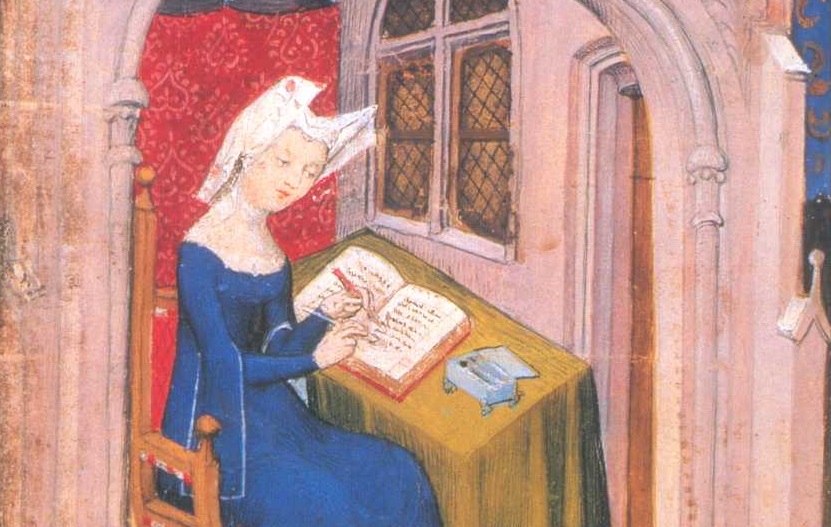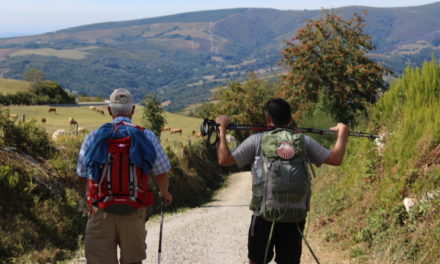In 1934 the manuscript of the biographical stories of Margery Kempe (1373-1438) was discovered – a very long text from the early fifteenth century of which until then only seven pages were known. It is one of the oldest pilgrimage itineraries, a very different itinerary from most of those known from that time, because far from being limited to descriptions and practical data, it is a personal and subjective diary much closer to the contemporary autobiographical stories.
Margery is an extraordinary and excessive figure, for many a neurotic, for others a mystic, but for most a figure that fascinates and surprises, to the point that two renowned researchers such as Robert Plötz and Klaus Herbers do not hesitate to refer to her itinerary and saying: “What a text and what a lady!”.
Born in Lynn in 1373, Margery married John Kempe around 1393, the first of her 14 children being born soon after! Over the years our heroine became more and more religious and came to experience visions. Although her life was not just motherhood and religion and Margery also sought her fortune in the field of business, where it seems that her entrepreneurial efforts failed, what that did not deprive her of her private fortune, which far superior to that of her husband, whom she saved on more than one occasion from his debts.
Her great fortune and her financial favors, which she time and again she bestowed on her husband, seem to have been the reason why he accepted Margery’s decision to pursue her religious vocation and undertake various pilgrimages. We know about the economic demands of her husband through her writings, in which Margery also refers to her taking care of her: he would have accompanied her on one of her trips and would have asked her to resign herself to systematic fasting.
Margery’s travels began in 1413, taking her to the Holy Land and to numerous shrines in Europe. In her book, her character appears again and again as a problem for her relationship with others, she often became hateful to her companions because of her eccentricities, continually going from being seen as a highly inspired visionary to being treated as insane, or mentally unbalanced.
The German researchers cited, Klaus Herbers and Robert Plözt, go so far as to speak of a woman who suffered something of the order of a “psychosis of standing still”, beyond the mental health diagnoses, what we can affirm is that the continuous pilgrimages of Margery seem to respond to something almost of an imperative order: she couldn’t stand up.
It was in 1417 when she was in Compostela, after a series of vicissitudes and health problems, Margery Kempe would have arrived in Galicia by boat from the English port of Bristol. According to her text, her life would have been in danger, before which she would have reminded God that she still wanted to make a pilgrimage to Compostela, at which time she would have recovereded ailments and finally headed to Bristol to embark in the spring of 1417.
We will never be able to know if her comments are merely autobiographical or if they were mediated by the hand of some clerk, but the truth is that she conveys above all her personal experience, her desire – almost an obligation – to make a pilgrimage to the tomb of the Apostle and her satisfaction for having accomplished her pilgrimage. Among the scarce data of a more practical order, we would refer to those related to the duration of the crossing: they sailed seven days from Bristol to Galicia, with good weather and a good wind, while the return journey would have required only five days.
Do not stop reading the adventures of Margery Kempe. She was a woman of character and her writings read like an adventure book, which has been published and translated into many languages.











